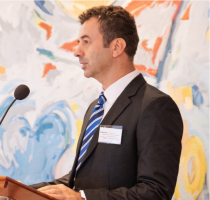Baby Boomers, born between 1946 and 1964, are frequent travellers. Many are retired and have the time and money to travel. More than one-fifth of the European population is made up of Baby Boomers, and most use European tour operators to organise their trips. There are good opportunities for local tour operators to attract this market with products carefully packaged to include active, immersive and meaningful experiences. However, it is important to remember that this is an ageing demographic, and products should meet a variety of needs.
The European tropical frozen fruit market is strong, with Germany and France standing out as leading consumers. Opportunities are arising from increased interest in exotic flavours and the health benefits of tropical fruits. Their frozen form offers convenience and year-round availability. New suppliers must be able to compete with already established offers from major exporters such as Peru, Vietnam and India. From beverages and desserts to culinary delights, tropical fruit infuses an exotic touch into the European diet.
New olive oil exporters that want to enter the European market need to put their products through regular laboratory and sensory tests. You may have a competitive advantage if you can offer olive oil with superior sensory characteristics, related to specific production areas, certified organic or backed by good storytelling marketing. The strongest competitors to new olive oil suppliers are currently in Spain, Italy, Portugal, Greece and Tunisia.
Search
Enter search terms to find market research
In the long-term, olive oil is expected to increasingly replace vegetable oils, driven by a healthy image and the increasing popularity of Mediterranean cuisines. However, in the short term, sales of olive oil in Europe are expected to decline because of the price increase due to energy crises caused by the war in Ukraine. Opportunities for new developing country suppliers can be found in large European markets, such as France, the United Kingdom, Germany, the Netherlands, Switzerland and Sweden.
Dried grapes are a traditional bakery and confectionary ingredient in Europe. They are increasingly used as a healthy snack, often in combination with nuts or other dried fruit. Opportunities for new developing country suppliers can be found in large markets such as the United Kingdom, Germany, the Netherlands, France, Italy and Poland. New suppliers must be ready to compete with the strong Turkish supply, which provides more than half of Europe’s imports of dried grapes.
Europe is the largest market for canned fruits and vegetables, representing more than 44% of total world imports in terms of value. Import volumes are on the increase for many types of canned fruits and vegetables. Large importing countries, particularly Germany, France, the United Kingdom, the Netherlands, Belgium and Spain, offer the best opportunities for exporters from developing countries. Competition mainly comes from other European countries, but developing countries like China and Turkey are also making their presence felt.
The demand for dried mushrooms in Europe is growing. The popularity of ‘medical’ dried mushrooms has particularly increased after the COVID-19 pandemic. Several types of mushrooms are now advertised as being beneficial for immune support. Dried mushrooms are used as a healthy replacement for animal proteins and as a unique ingredient for flavour in many dishes. Opportunities for suppliers from developing countries can be found in large markets such as Italy, Germany and France.
Food safety certification, combined with reliable and frequent laboratory tests, creates a positive image for date exporters to Europe. Sustainable production and implementation of corporate social responsibility standards will provide additional advantages for emerging suppliers. Tunisia and Algeria are the leading suppliers to Europe.
Search
Enter search terms to find market research
Demand for coconut water in Europe is driven by the increasing demand for functional and low-calorie drinks. Coconut is perceived to be a natural low-energy sports drink that helps rehydration. Also, coconut water is increasingly used as an ingredient in the beverage industry. Opportunities for new suppliers can be found in the United Kingdom, the largest European coconut water market. Growing markets include Germany, France, Spain, Italy and the Netherlands.
The demand for dates in Europe is increasing. Dates are particularly popular for their sweetness, as a natural source of energy, a sugar substitute, an ingredient in fruit bars and as a cooking ingredient. Opportunities for developing country suppliers can be found in large markets such as France, Germany, the United Kingdom, Italy, Spain and the Netherlands.
